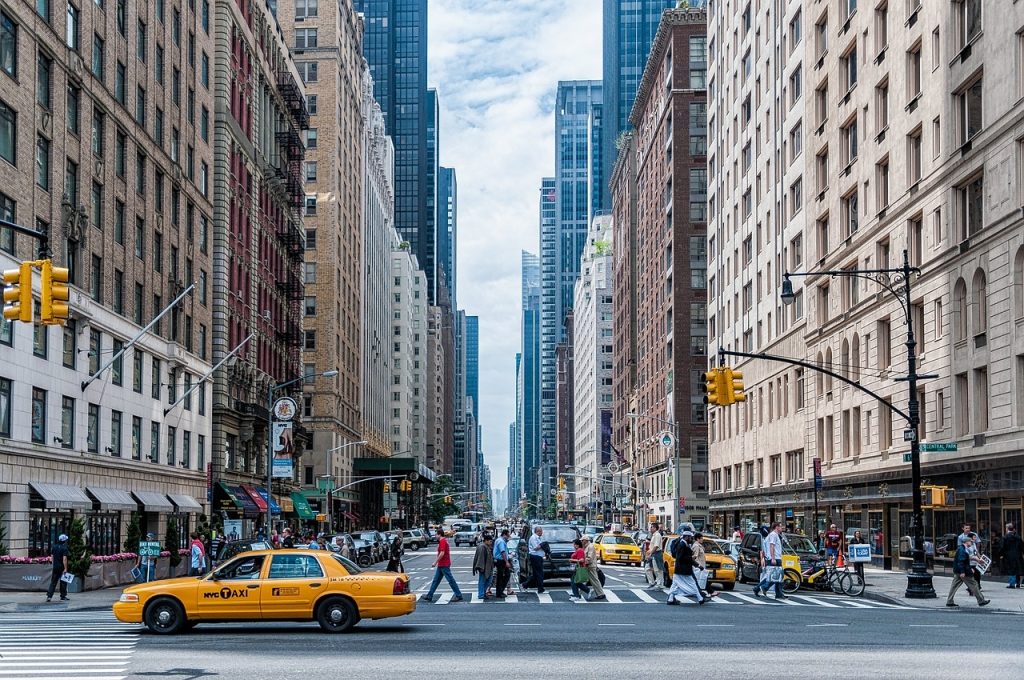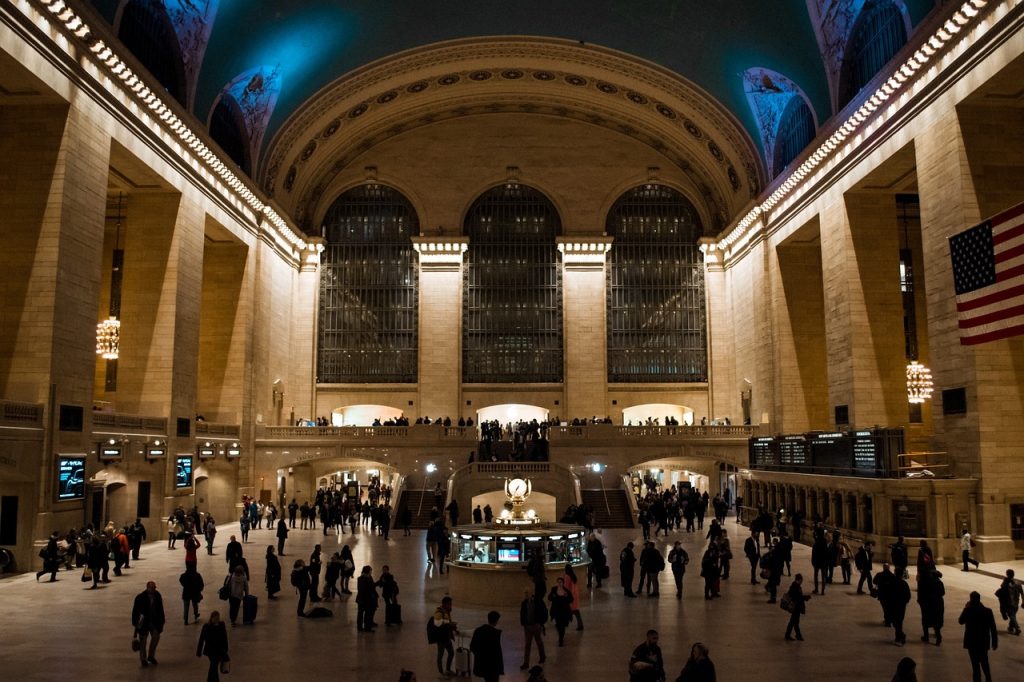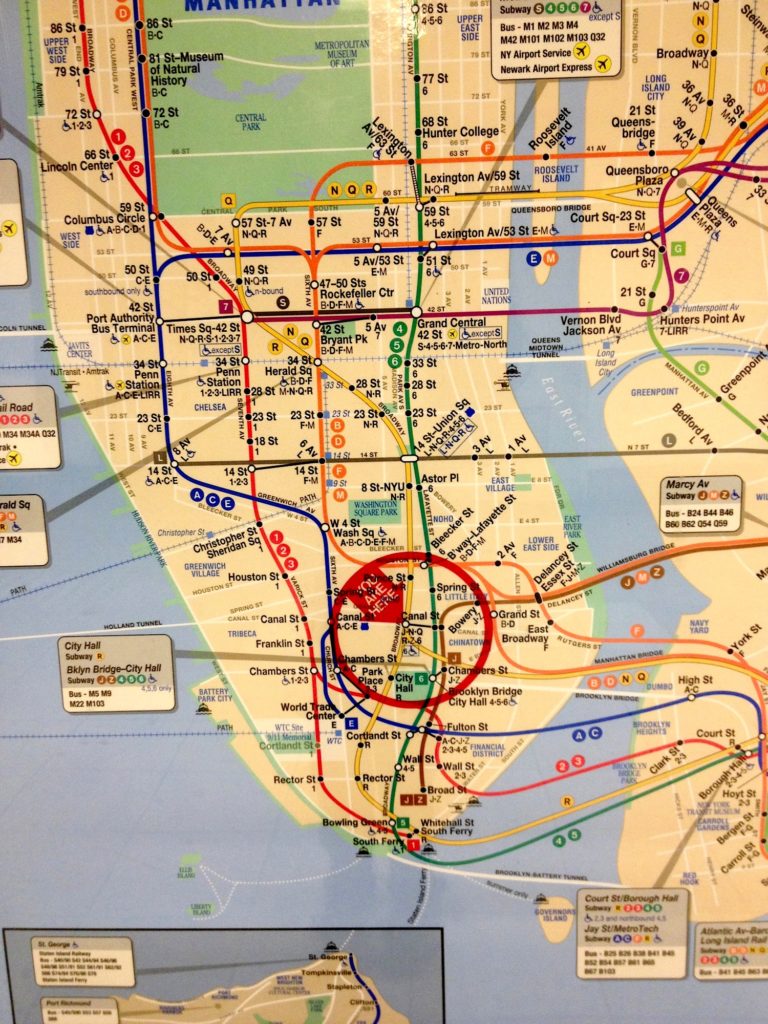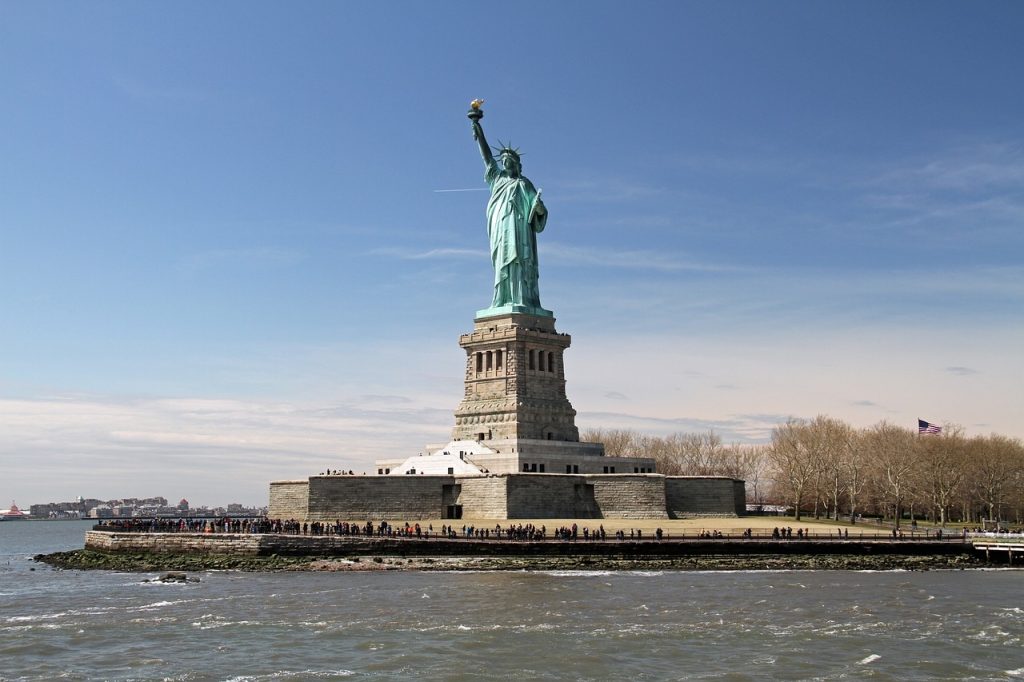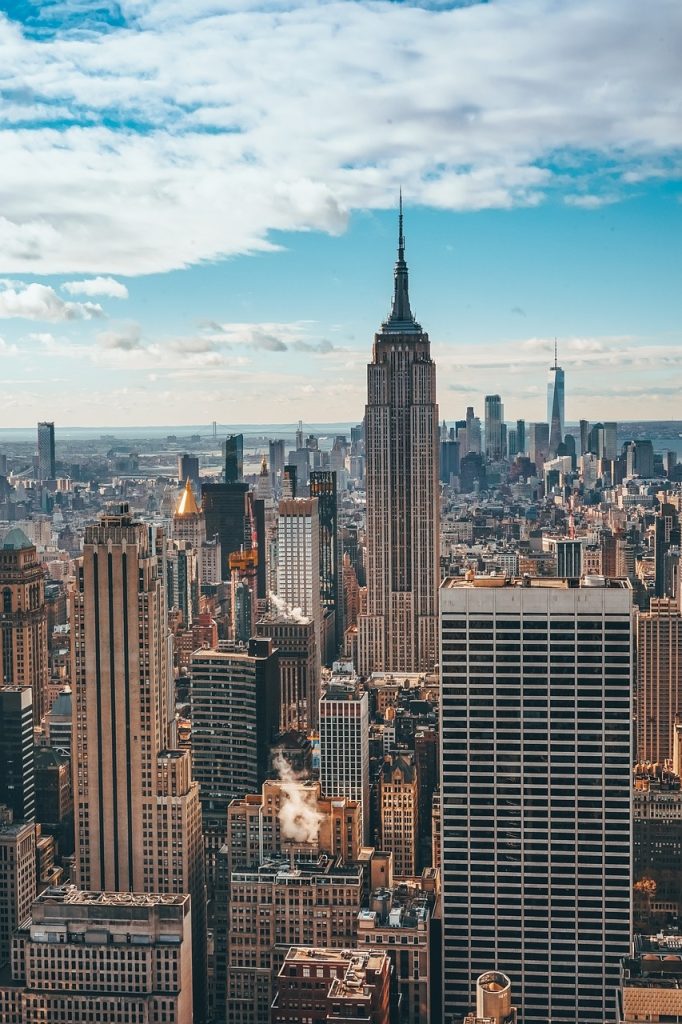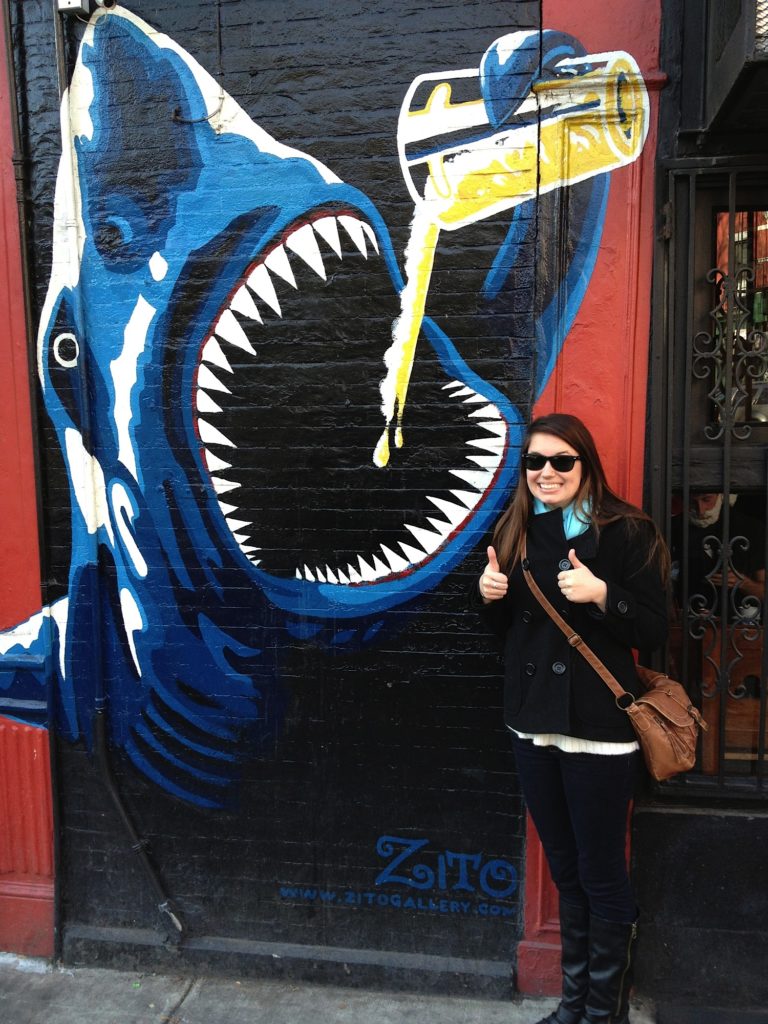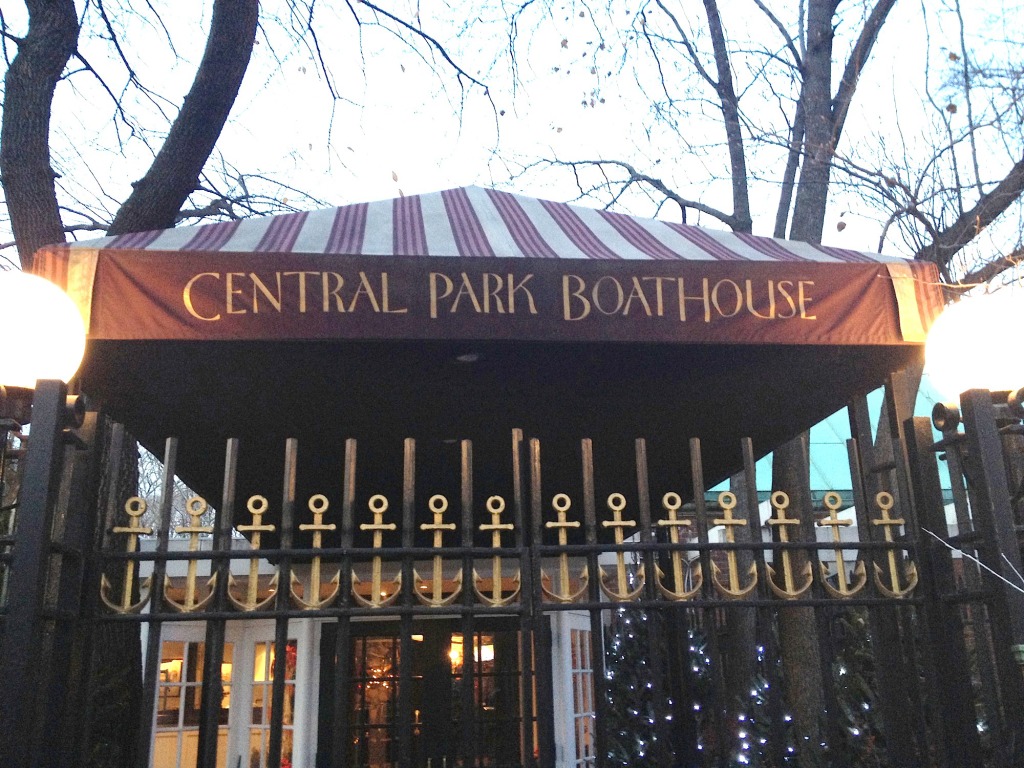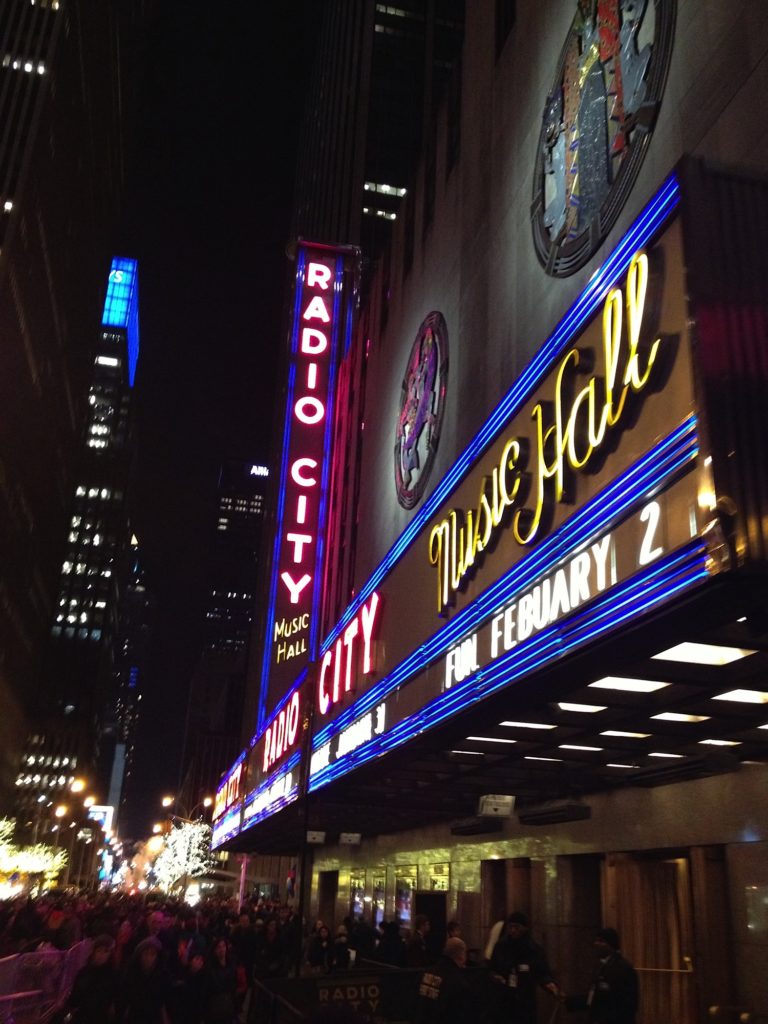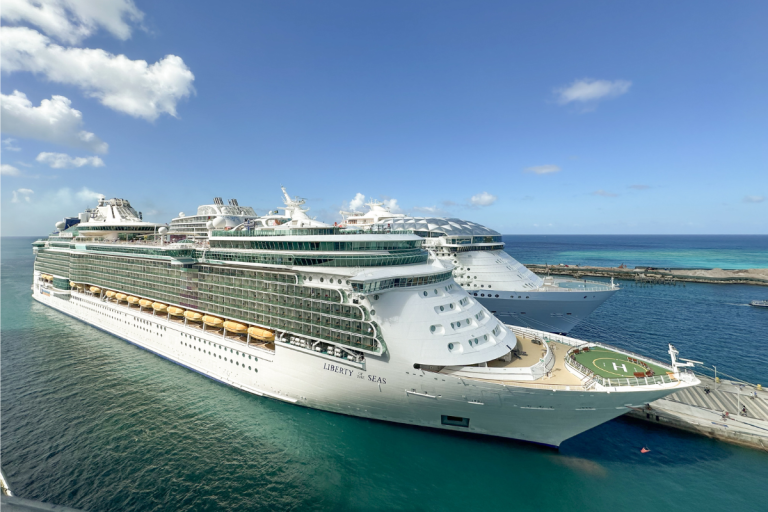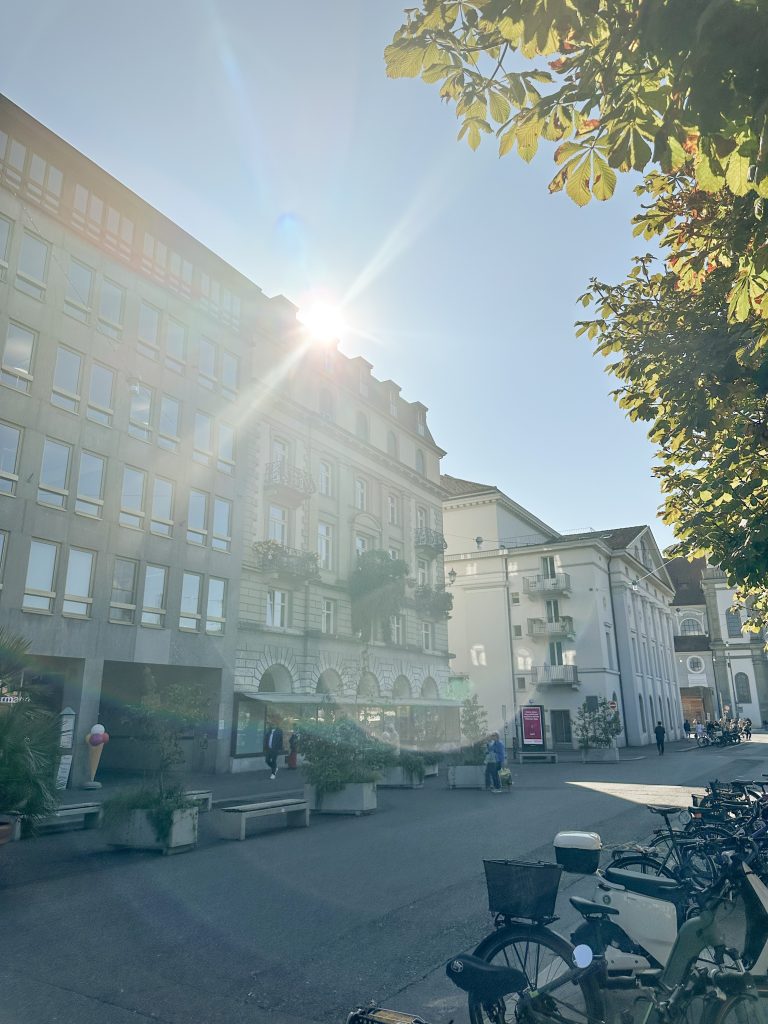101 Fun Things To Do In New York For First Time Visit
New York City—often referred to as “The City That Never Sleeps”—is one of the most iconic and vibrant cities in the world. Whether it’s your first time visiting or you’re returning to discover more, NYC offers unmatched energy, a melting pot of cultures, and endless opportunities for exploration.
From the towering skyscrapers of Manhattan to the artsy vibes of Brooklyn, the city’s diversity is reflected in its boroughs, neighborhoods, food, and experiences. Let’s dive into the best things to do in New York for the first time!
DISCLAIMER: Hi there! Just a heads up- if you click on a link within this post I may receive a small commission from the affiliate links. I appreciate your support of To Travel & Beyond and hope to bring you great recommendations for many years to come!
Having lived in Baltimore for most of my life, New York City was a 3-hour drive away, so we were there often! I have fond memories of walking through the World Trade Center with my grandmother, leaving home at 1am to try and get to Good Morning America in time to meet Miley Cyrus (we did!), shopping on Canal Street with friends on a high school field trip, taking my boyfriend (now husband) to experience his first visit during Christmas, and many moments in-between.
The city has a very special place in my heart and I am excited to provide a list of things to do in New York for first time visitors and also hopefully inspire frequent travelers to try new things!
Ultimate Guide to Experiencing New York City: The History, Transportation Options, Places To Visit, and Things To Do in New York City For First Time Visitors
An Introduction to New York City
New York City, or NYC, is made up of five boroughs: Manhattan, Brooklyn, Queens, The Bronx, and Staten Island. Each borough has its unique character, attractions, and charm. While Manhattan often steals the spotlight, the other boroughs are equally fascinating and worth exploring. In this guide, we’ll give you a rundown of each borough, the best transportation options to navigate the city, and a list of 100 must-do activities to make your trip unforgettable.
Exploring the Boroughs of New York City
Manhattan
Manhattan is the heart of New York City and home to the world-famous skyline that includes the Empire State Building, One World Trade Center, and the Chrysler Building. Here, you’ll find Times Square, Central Park, Wall Street, and the famous neighborhoods of SoHo, Greenwich Village, and Harlem.
Top Attractions: Statue of Liberty (by ferry), Broadway shows, Central Park, the Metropolitan Museum of Art, the 9/11 Memorial & Museum.
Vibe: Fast-paced, dynamic, and cosmopolitan.
Brooklyn
Brooklyn is known for its hipster culture, diverse neighborhoods, and artsy feel. Walk across the Brooklyn Bridge to take in stunning views of Manhattan and explore Brooklyn Heights or visit the trendy streets of Williamsburg. Don’t miss out on Coney Island, which offers a nostalgic beach and amusement park experience.
Top Attractions: Brooklyn Bridge, Prospect Park, Coney Island, Brooklyn Botanic Garden, Brooklyn Museum.
Vibe: Creative, bohemian, and laid-back with family-friendly areas like parks and walking paths.
Queens
Queens is NYC’s most ethnically diverse borough and is celebrated for its cultural diversity, delicious food from around the world, and vast green spaces. It’s also home to two major airports: JFK International and LaGuardia. You can visit Flushing Meadows-Corona Park, where the U.S. Open tennis tournament takes place.
Top Attractions: Flushing Meadows-Corona Park, MoMA PS1, Astoria, Queens Night Market.
Vibe: Multicultural, family-friendly, and up-and-coming.
The Bronx
The Bronx is home to Yankee Stadium, the legendary New York Yankees’ home turf, and the Bronx Zoo, the largest metropolitan zoo in the United States. The Bronx is also the birthplace of hip-hop, making it an essential stop for music lovers. Explore its rich cultural heritage and enjoy authentic Latin cuisine in neighborhoods like Belmont and Fordham.
Top Attractions: Yankee Stadium, Bronx Zoo, New York Botanical Garden, Little Italy, City Island.
Vibe: Excited, artistic, and lively.
Staten Island
Staten Island is often the most overlooked borough by tourists, but it offers a more laid-back and suburban vibe compared to the hustle of Manhattan. Take the Staten Island Ferry for free, and enjoy stunning views of the Statue of Liberty and lower Manhattan. Staten Island has historic sites, quiet beaches, and a relaxed pace of life.
Top Attractions: Staten Island Ferry, Snug Harbor Cultural Center, Staten Island Zoo, Historic Richmond Town.
Vibe: Tranquil, suburban, and scenic.
Getting Around New York City: Transportation Options
New York City’s transportation system is extensive, and there are multiple ways to get around. It’s helpful to look into how to navigate each transportation option, especially the subway and ferry systems. They are both great options to get around, but it can be a stressful experience if you aren’t familiar with their modes of transportation. Let’s dive into how to use public transport in New York City.
Take the Subway
The New York City Subway is one of the fastest ways to travel between boroughs and within Manhattan. it’s also one of the most iconic and efficient ways to get around the city. With 472 stations and more than 665 miles of track, it’s the largest subway system in the world and operates 24 hours a day, 7 days a week.
While it may seem overwhelming at first, navigating the NYC subway is manageable once you understand the basics. Within the following details, we’ll cover everything you need to know, including how to read the subway map, popular routes, and helpful tips to make your trip easier.
Overall, keep n mind that it operates 24/7 and can take you almost anywhere in the city. A MetroCard or the OMNY contactless payment system can be used to pay for rides.
Understanding the NYC Subway Map
The NYC Subway map is color-coded by line, with each line having both a color and a number or letter designation. Trains are often referred to by their numbers (1, 2, 3, etc.) or letters (A, B, C, etc.), and their colors are consistent on the map but serve more to group related lines rather than distinguish individual ones.
- Red Line: 1, 2, 3 trains (Broadway–Seventh Avenue Line)
- Green Line: 4, 5, 6 trains (Lexington Avenue Line)
- Blue Line: A, C, E trains (Eighth Avenue Line)
- Orange Line: B, D, F, M trains (Sixth Avenue Line)
- Yellow Line: N, Q, R, W trains (Broadway Line)
- Gray Line: L train (Canarsie Line)
- Purple Line: 7 train (Flushing Line)
Stations are marked on the map, with dots representing where trains stop. Some stations are larger transfer hubs where multiple lines connect. Key areas like Times Square, Grand Central, and Union Square are common transfer points.
You can find the full NYC Subway map at stations or online, and it’s highly recommended to download a digital copy to your phone. Additionally, Google Maps and other transit apps offer step-by-step directions for subway routes.
Subway Basics: How to Use the Subway
1. Paying for Your Ride: To ride the subway, you can use either a **MetroCard** or the new **OMNY contactless system. Here’s how they work:
MetroCard: The MetroCard can be purchased at subway stations from kiosks and is swiped at turnstiles to gain access. You can choose between Pay-Per-Ride (which deducts the cost of each trip) or Unlimited Ride (7-day or 30-day passes). Each trip costs $2.90.
OMNY: OMNY allows you to pay directly with your credit or debit card by tapping it at the turnstile. You can also use mobile payment services like Apple Pay or Google Pay. The same $2.90 fare applies, and OMNY offers free transfers between buses and subways within two hours.
2. Uptown vs. Downtown: It’s essential to know whether you’re headed uptown (north) or downtown (south) to choose the correct platform. Signs at station entrances and on the platforms will indicate whether a train is headed uptown or downtown.
- Uptown trains generally head north, toward Harlem, the Bronx, or Upper Manhattan.
- Downtown trains head south, toward Lower Manhattan, Brooklyn, or other boroughs.
3. Local vs. Express Trains: NYC has local and express trains:
- Local trains stop at every station along the line. These include trains like the 1, 6, R, and C trains.
- Express trains skip certain stops, saving time for longer journeys. For example, the 2, 3, 4, and 5 trains are express trains that run parallel to local trains on the same lines. Express trains are great for getting across the city faster but be sure to check that they stop at your destination.
4. Transferring Between Lines: Many stations allow transfers between lines, which means you can switch from a local to an express train (or vice versa) without paying another fare. Transfer stations are marked on the subway map with white circles and black borders. Some of the major transfer hubs include:
- Times Square – 42nd Street (1, 2, 3, N, Q, R, S, 7 trains)
- Grand Central – 42nd Street (4, 5, 6, 7, S trains)
- Union Square – 14th Street (4, 5, 6, L, N, Q, R trains)
- Herald Square – 34th Street (B, D, F, M, N, Q, R trains)
- Fulton Street (A, C, J, Z, 2, 3, 4, 5 trains)
At transfer stations, look for signs that direct you to the other train lines. It’s common to see signs pointing to “Downtown” or “Uptown” trains for further clarity.
Popular Subway Routes for Tourists
Here are some of the most popular subway routes to help you explore key attractions around NYC:
1. Times Square to Central Park
Take the N, Q, R, W, or 1 train uptown** from Times Square to 59th Street – Columbus Circle or 5th Avenue – 59th Street. Central Park’s southern entrance is a short walk from both stations.
2. Lower Manhattan to the Statue of Liberty
Take the 1 train downtown to South Ferry or the R train to Whitehall Street to catch the ferry to the Statue of Liberty.
3. Midtown Manhattan to Brooklyn Bridge
Take the 4, 5, or 6 train downtown to Brooklyn Bridge – City Hall station. The entrance to the pedestrian walkway for the Brooklyn Bridge is nearby.
4. Brooklyn to Manhattan
Take the A or C train from Brooklyn’s Jay Street – MetroTech to Times Square – 42nd Street or Columbus Circle – 59th Street in Manhattan. This is a convenient route for those staying in Brooklyn and visiting Manhattan’s main attractions.
5. From JFK Airport to Manhattan
Take the AirTrain from JFK Airport to Jamaica Station and transfer to the E train to head directly into Midtown Manhattan (stopping at Penn Station or Times Square).
Helpful Tips for Using the Subway
1. Download Transit Apps: Apps like Citymapper, Google Maps, and Transit provide real-time updates, subway maps, and step-by-step directions.
2. Avoid Rush Hour: Try to avoid traveling during peak hours (8-10 AM and 5-7 PM) when the subway is most crowded.
3. Hold Onto the Poles: Trains can start and stop suddenly, so make sure to hold onto a pole or grab a seat to avoid losing your balance.
4. Check for Service Changes: On weekends and late at night, subway lines often have changes due to construction. Signs at subway entrances will indicate any service alterations, and apps will notify you of reroutes.
5. Mind the Gap: Subway platforms don’t always align perfectly with the train doors, so be mindful of the gap between the train and the platform edge when boarding and exiting.
6. Stay Alert: While the NYC subway is generally safe, it’s always wise to keep an eye on your belongings and avoid empty subway cars late at night.
Using the New York City subway is an efficient and affordable way to explore the city’s five boroughs. With some practice and by following these tips, you’ll be riding the subway like a seasoned New Yorker in no time!
Use the Bus System
The city’s bus system is extensive and offers a great way to travel short distances or reach places not accessible by subway, or as a complement to a subway journey to areas not-well served by trains or for shorter trips.
Buses are slower but offer the benefit of sightseeing while on the go. Here’s a list of tips to help you navigate NYC’s buses like a pro:
Tips for Using the Bus System in New York City
1. Use a MetroCard or OMNY: You can use the same MetroCard or OMNY contactless payment method for buses as you do for the subway. The fare is $2.90 per ride, and you get a free transfer between buses or between buses and the subway within two hours.
2. Know the Difference Between Local and Express Buses
- Local buses stop at every stop along the route.
- Express buses (indicated by an “X” before the number) are more expensive (currently $6.75) and make fewer stops, often connecting the outer boroughs to Manhattan. These are best for longer commutes.
3. Check the Bus Route and Schedule: Use apps like Google Maps, Citymapper, or the MTA Bus Time website to check real-time bus arrivals and plan your trip. You can also find printed bus schedules at most major bus stops.
4. Look for Bus Route Numbers
- Bus routes are numbered (e.g., M15, B41, Q32) based on the borough they serve:
- M for Manhattan
- B for Brooklyn
- Q for Queens
- BX for The Bronx
- S for Staten Island
- Make sure to board the correct bus for your destination by checking the bus number and route.
5. Boarding and Exiting the Bus
- Board at the front of the bus, where you’ll either tap your OMNY card or swipe your MetroCard.
- Exit at the rear door to avoid crowding at the front.
6. Signal the Driver When You Need to Stop: Press the yellow strip or pull the cord near the windows to signal the driver to stop at the next bus stop.
7. Use Select Bus Service (SBS) for Faster Rides: Select Bus Service (SBS) buses run on dedicated lanes and make fewer stops. For SBS routes, you must pay your fare at a kiosk at the bus stop before boarding and take a receipt, which you should keep in case of inspection.
8. Plan for Traffic Delays: Buses in NYC can be slower than the subway because they are subject to traffic, especially during peak hours. Allow extra time for your trip, particularly if you’re traveling during rush hour or bad weather.
9. Know the Direction of Travel: Like the subway, buses travel in two directions: uptown/downtown in Manhattan, and east/west or north/south in other boroughs. Be sure to check that you’re boarding the bus going in the right direction.
10. Stand Clear of the Doors: If you’re standing, move toward the center of the bus and avoid blocking the front or rear doors. This ensures the smooth flow of passengers.
11. Take Advantage of Transfers: You get one free transfer between buses or between a bus and subway ride within two hours. This transfer is automatic when using MetroCard or OMNY, and you don’t have to pay again if you switch routes within that window.
12. Use the Accessible Features: NYC buses are wheelchair accessible, with ramps and designated seating areas. If you need assistance boarding, let the driver know, and they will help lower the ramp.
13. Hold on for Safety: Buses can stop suddenly due to traffic, so hold onto the poles or handrails, even when seated.
14. Be Aware of Night Service: Many buses operate 24/7, but some routes may have limited service late at night. Check schedules for night buses if you’re traveling after hours.
15. Pay Attention to Express Bus Rules: On express buses, seats are often reserved for longer-distance commuters. Be mindful of express bus etiquette, such as not taking up extra space with bags during rush hour.
16. Look for Electronic Signs and Announcements: Many buses have electronic signs and announcements to let you know the next stop. Keep an eye on these, especially if you’re unfamiliar with the route.
17. Give Priority to Seniors and People with Disabilities: Seats near the front are designated for seniors, people with disabilities, and pregnant individuals. Offer your seat to someone in need if these seats are occupied.
18. Dress for the Weather: NYC buses can sometimes be slow in extreme weather, and some bus stops don’t have shelters. Be prepared for the elements when waiting.
By following these tips, you’ll have a smooth and efficient experience using New York City’s extensive bus system!
Opt for a Classic Yellow Cab or Rideshare
Yellow cabs are iconic in NYC, and you can hail one almoslot anywhere in Manhattan. Rideshare apps like Uber and Lyft are also widely available for more personalized or longer-distance rides.
Sightsee on A NYC Ferry
New York City is famous for its skyline and waterfronts, making ferries a scenic and practical way to get around. NYC’s ferry system provides convenient routes that connect all of New York City, offering an alternative to the subway or buses.
The NYC Ferry service is a scenic way to travel between Manhattan, Brooklyn, Queens, and Staten Island. The Staten Island Ferry, in particular, offers free rides between Manhattan and Staten Island. Whether you’re commuting or sightseeing, the ferry can be an enjoyable and relaxing experience. Here’s everything you need to know about the ferry options and tips for using them effectively.
Ferry Options in New York City
1. NYC Ferry
Operated by the city, NYC Ferry offers several routes that travel between Manhattan, Brooklyn, Queens, and the Bronx. It’s a great way to travel while enjoying panoramic views of the city. The current routes include:
- East River Route: Connecting Wall Street (Pier 11), Dumbo, Greenpoint, Long Island City, and East 34th Street.
- Rockaway Route: Connecting Wall Street (Pier 11) to the Rockaways and Brooklyn’s Sunset Park.
- South Brooklyn Route: Traveling between Wall Street (Pier 11), Red Hook, Brooklyn Bridge Park, DUMBO, and Bay Ridge.
- Astoria Route: Connecting Wall Street (Pier 11) to Roosevelt Island, Long Island City, Astoria, and East 90th Street.
- Soundview Route: Serving the Bronx (Soundview), East 90th Street, East 34th Street, and Wall Street.
- St. George Route: Connecting Staten Island’s St. George Terminal to Battery Park City and Midtown West (39th Street).
- Coney Island Route (seasonal): Connecting Wall Street to Coney Island.
The fare is a flat rate of $4 per ride (with discounted options available), and children under 44 inches ride for free.
2. Staten Island Ferry: The Staten Island Ferry is a free service connecting Lower Manhattan (Whitehall Terminal) with Staten Island (St. George Terminal). It runs 24 hours a day, with frequent service during peak hours. This is a popular route for both commuters and tourists, as it offers stunning views of the Statue of Liberty, Ellis Island, and the Manhattan skyline.
3. New York Water Taxi: The New York Water Taxi operates sightseeing and commuter routes. It’s popular with tourists because it offers hop-on, hop-off services that stop at major attractions, including the Brooklyn Bridge, South Street Seaport, and the Intrepid Sea, Air & Space Museum.
4. Liberty Island & Ellis Island Ferries: For visitors wanting to explore the Statue of Liberty and Ellis Island, dedicated ferry services run from Battery Park in Manhattan and Liberty State Park in New Jersey. Tickets must be purchased in advance or at the terminal, with both ferry rides and entry to the landmarks included.
5. East River Ferry (NY Waterway): Operated by NY Waterway, the East River Ferry offers service between Manhattan and Brooklyn, with stops at Wall Street (Pier 11), DUMBO, Williamsburg, and Greenpoint. It is an excellent option for those commuting between Brooklyn and Manhattan or those exploring these vibrant neighborhoods.
Tips for Using the Ferry System in New York City
1. Plan Your Route in Advance: Check ferry schedules and routes before heading out. NYC Ferry, Staten Island Ferry, and other services have apps or websites that provide real-time schedules and maps, making it easier to plan your trip.
2. Arrive Early: Ferries can fill up quickly, especially during peak hours or on weekends when tourists are out and about. Arrive at least 15-20 minutes early to ensure you get a spot.
3. Use a Transit App: Download the NYC Ferry app or use a transit app like Citymapper or Google Maps to check ferry schedules, buy tickets, and get real-time updates on ferry status.
4. Enjoy the View: The ferry provides some of the best views of the city, including landmarks like the Statue of Liberty, the Brooklyn Bridge, and the Manhattan skyline. Try to grab a seat near a window or head to the top deck to enjoy the scenery.
5. Pack for the Weather: The ferry can get chilly, especially on the upper deck or during the winter months. Bring a jacket or layers to stay warm, and don’t forget sunglasses and sunscreen for sunny days.
6. Be Aware of Peak Times: Ferries can get crowded during rush hours (morning and evening on weekdays). If you’re commuting, plan your trip accordingly or try to travel during off-peak hours to avoid long waits.
7. Ticketing and Payments: For NYC Ferry, you can buy tickets through the NYC Ferry app or at vending machines at ferry landings. The fare is currently $4 for a one-way trip. Some ferry services, like the Staten Island Ferry, are free, while others (such as the Liberty Island Ferry) require advance purchase tickets.
8. Bring Snacks or Drinks: NYC Ferry boats have small concessions on board where you can buy coffee, snacks, and beverages, but feel free to bring your own food. The Staten Island Ferry also offers refreshments, but you can bring food and drink for the ride.
9. Take Advantage of Free Transfers: NYC Ferry offers free transfers within the system, so if you’re traveling on multiple routes (e.g., switching between the East River and South Brooklyn routes), you won’t need to pay an additional fare. Just be sure to check the schedule for your connecting route.
10. Use the Ferry for Sightseeing: Many ferries pass iconic landmarks like the Statue of Liberty, Ellis Island, and the Brooklyn Bridge. The Staten Island Ferry is a popular (and free) option for sightseeing without paying for a tour.
11. Stay Safe: Follow safety instructions on the ferry, particularly if you’re on an outdoor deck. Hold onto railings, especially when the boat is docking, as it can get bumpy.
12. Keep an Eye on the Weather: Ferries operate in most weather conditions, but severe weather (heavy fog, storms, etc.) can cause cancellations or delays. Check for updates on the ferry company’s app or website.
13. Know the Terminal Locations: Be familiar with where the ferry terminals are located, especially if you’re new to the city. For example, the Staten Island Ferry departs from Whitehall Terminal in Lower Manhattan, while NYC Ferry has several terminals, including Wall Street, East 34th Street, and Brooklyn Bridge Park.
14. Take the Staten Island Ferry for Free: The Staten Island Ferry is free and provides some of the best views of the Statue of Liberty and Ellis Island. It’s one of the best budget-friendly sightseeing options in the city!
15. Look for Special Promotions: Some ferry services, especially tourist-focused ones like New York Water Taxi, often offer discounts or promotions. Keep an eye on their websites for special deals on multi-day passes or group tickets.
New York City’s ferry system is an efficient, affordable, and scenic way to get around the city. Whether you’re a commuter seeking an alternative to the subway or a visitor wanting to take in the city’s stunning waterfront views, the ferry is a great transportation option. By following these tips, you’ll be able to navigate the ferry system smoothly and enjoy the unique experience of riding the waves in NYC.
Take A Walk Around The City
Arguably, my favorite way to get around New York City when I want to explore is on foot. It’s a very city to walk through and explore. Many of NYC’s neighborhoods, especially in Manhattan and Brooklyn, are very walkable. Walking also lets you discover hidden gems, quaint cafes, and local street art.
Rent a Bike
NYC has embraced cycling, with many bike lanes and paths throughout the boroughs. You can rent bikes through the Citi Bike program, which is a fun and eco-friendly way to explore the city. I will admit that this mode of transportation is usually my favorite, but I feel a bit stressed biking in NYC due to the number of people, bikers, and cars- many of who don’t understand the right of way.
100 Things to Do in New York City
Now that you have an idea of the various boroughs and where you may want to go, as well as how to get around the city, let’s dive into all the fun things to do in New York City and make the most of your time.
1. Visit the Statue of Liberty. Take the Staten Island Ferry to see it from a distance or visit the Statue of Liberty museum!
2. Walk through Central Park. There is SO MUCH to do and see- you could spend an entire day without leaving the park. It’s the 7th largest public park in the US.
3. See a Broadway show. Check out the show schedule before you visit; there are often last-minute tickets available (check out the tkts booth) if you don’t have time to plan in advance.
4. Take the ferry to Ellis Island. The scenic ride is beautiful!
5. Explore the Metropolitan Museum of Art. An iconic museum, don’t forget to pause for a photo on the steps like a celebrity or a Gossip Girl. The Met is the fourth largest-museum in NYC and absolutely beautiful!
6. Visit the 9/11 Memorial & Museum. It’s a sobering but must-see while in the city.
7. Walk across the Brooklyn Bridge. It’s a beautiful walk, and helpful to have a pedestrian path.
8. Ride the Staten Island Ferry. To see the Statue of Liberty and beautiful views.
9. Shop in SoHo. Maybe shopping or maybe window shopping- both of them are great ideas!
10. Stroll through Times Square. Visit once during the day and again at night!
11. Visit the Empire State Building. This is the PERFECT spot for a sunset if you can plan to be at the top around golden hour, you will get a view of the city during the day and at night- both are unique and stunning!
12. Explore the American Museum of Natural History.
13. Wander around Greenwich Village. Some of the best spots to eat!
14. Check out the MoMA (Museum of Modern Art).
15. Attend a Yankees game at Yankee Stadium. Even if you aren’t a Yankee’s fan- seeing a live baseball game is always a fun time.
16. See the art at the Guggenheim Museum. Worth it just to see the unique outside architecture.
17. Visit the High Line park. LOVE walking the High Line, it’s such a unique and beautiful walk with a unique perspective.
18. Discover street art in Bushwick, Brooklyn.
19. Enjoy the view from One World Observatory.
20. Have a picnic in Bryant Park. Don’t skip over Bryant Park! Central Park is the most popular, but I love this smaller little sister 🙂
21. See the ground from far above at NYC Edge at Hudson Yards.
22. Visit the Intrepid Sea, Air & Space Museum.
23. Walk along the Hudson River Park.
24. Catch a show at Radio City Music Hall. If you are visiting during the holiday season, this is a MUST.
25. Shop at Chelsea Market.
Want to see as much of New York City as you can during your visit, while also saving money? Check out the New York Pass or CityPASS. It can be purchased for a variety of amounts of days, will get you into specific attractions and will get you discounts as well. It’s absolutely worth the cost whether you want to see a lot in a short amount of time or if you want to spend multiple days in the city.
26. Explore Little Italy. Stop here for dinner!
27. Attend the U.S. Open in Queens.
28. Visit the Bronx Zoo. It’s a great zoo- perfect family experience.
29. Check out the New York Botanical Garden.
30. Ride the Cyclone at Coney Island. This is a fun option if you are visiting in the summer!
31. Explore the Frick Collection.
32. Discover hidden speakeasies.
33. Visit the New York Public Library.
34. Enjoy the view from Top of the Rock. One of my favorite views of the city!
35. Watch a performance at Lincoln Center.
36. Try pizza at Grimaldi’s in Brooklyn.
37. Walk through Prospect Park in Brooklyn.
38. Visit the Tenement Museum.
39. Explore Roosevelt Island.
40. Walk along DUMBO’s waterfront.
41. Visit the Cloisters Museum.
42. Explore Ellis Island Immigration Museum.
43. Walk around Battery Park.
44. Check out the New Museum.
45. Visit Governors Island.
47. Walk through the Oculus at the World Trade Center.
48. Catch a comedy show.
49. Explore the West Village.
50. See a concert at Madison Square Garden. Bucket list item to check off if there is an artist you want to see!
Want to experience New York City during the holiday season? Check out this one-day itinerary!
51. Stroll through the South Street Seaport.
52. Visit the Museum of the Moving Image in Queens.
53. Explore Arthur Avenue in the Bronx.
54. Go ice skating at Rockefeller Center in winter. Or go ice skating elsewhere- just be sure to do it if you visit in the winter!
55. Visit the Museum of the City of New York.
56. Watch a live taping of one of the morning shows- Good Morning America, The Today Show, etc.
57. Explore the Flatiron District.
58. Take a guided tour of Harlem.
59. Discover art galleries in Chelsea.
60. Ride the Roosevelt Island Tram.
61. Attend a concert at Barclays Center in Brooklyn.
62. Visit the Rubin Museum of Art.
63. See a jazz show at the Blue Note.
64. Walk along the East River Esplanade.
65. Visit the Brooklyn Flea Market.
66. Tour the United Nations headquarters.
67. Attend a rooftop bar in Manhattan. There are so many popping up in the summer and winter- all the aperol spritz vibes or hot chocolate vibes in the winter.
68. Explore the Lower East Side.
69. Visit the Jewish Museum.
70. Discover the history of Grand Central Station Terminal.
71. Go to famous TV or movie sets. I can’t begin to count the number of movies and TV shows filmed in New York City. Many of them have locations you can visit, like the Friends apartment, Carrie Bradshaws steps, etc.
72. Walk along Riverside Park.
73. Go to the Bronx’s Little Italy.
74. Enjoy the Green-Wood Cemetery in Brooklyn.
75. Explore street vendors on Canal Street. This was my favorite thing to do in high school! I was able to “match” Lauren Conrad with a Chanel purse 😉 #IYKYK
Are you looking for a one-day tour to do it all and see it all? This option is perfect for the entire family!
76. Visit the Queens Museum.
77. Attend a concert at Carnegie Hall.
78. Walk and window shop on fifth avenue.
79. Enjoy the nightlife in the Meatpacking District.
80. Discover the history of the Apollo Theater in Harlem.
81. Visit the African Burial Ground National Monument.
82. Ride the Jane’s Carousel in Brooklyn Bridge Park.
83. See a Mets game at Citi Field in Queens.
84. Take a hop-on/hop-off bus tour. I love this option to get around the area and stop at all the major tourist attractions, this is truly the perfect way to see many sights if you are a first-time visitor!
85. Take a photography tour of Manhattan’s landmarks.
86. Enjoy a rooftop cinema experience.
87. Explore the Bowery neighborhood.
88. Check out the historic Flatiron Building.
89. Walk through Washington Square Park.
90. Visit the Queens County Farm Museum.
91. Take a graffiti and street art walking tour.
92. Explore the South Bronx Culture Trail.
93. Visit the Staten Island Children’s Museum.
94. Visit the Summit One observation deck. Many people have strong opinions about which observation deck is the best in NYC, and this one ranks pretty high.
95. Walk along the Gansevoort Street.
96. Explore Governors Island by bike.
97. Visit the American Folk Art Museum.
98. Discover vintage shops in Williamsburg.
99. Ride the wooden elevator in Macy’s.
100. Enjoy a sunset cruise around Manhattan.
New York City is a treasure trove of experiences, offering something for every traveler. Whether you’re into history, art, culture, food, or nature, the city will leave a lasting impression.
Enjoy your first visit, and make sure to explore beyond the main attractions to truly soak in the diversity and energy of the Big Apple! I would love to know which things to do in New York city for the first time end up on your list!
Want To Read More About New York City?
Free Things To Do In New York City
Exploring New York City for Christmas

